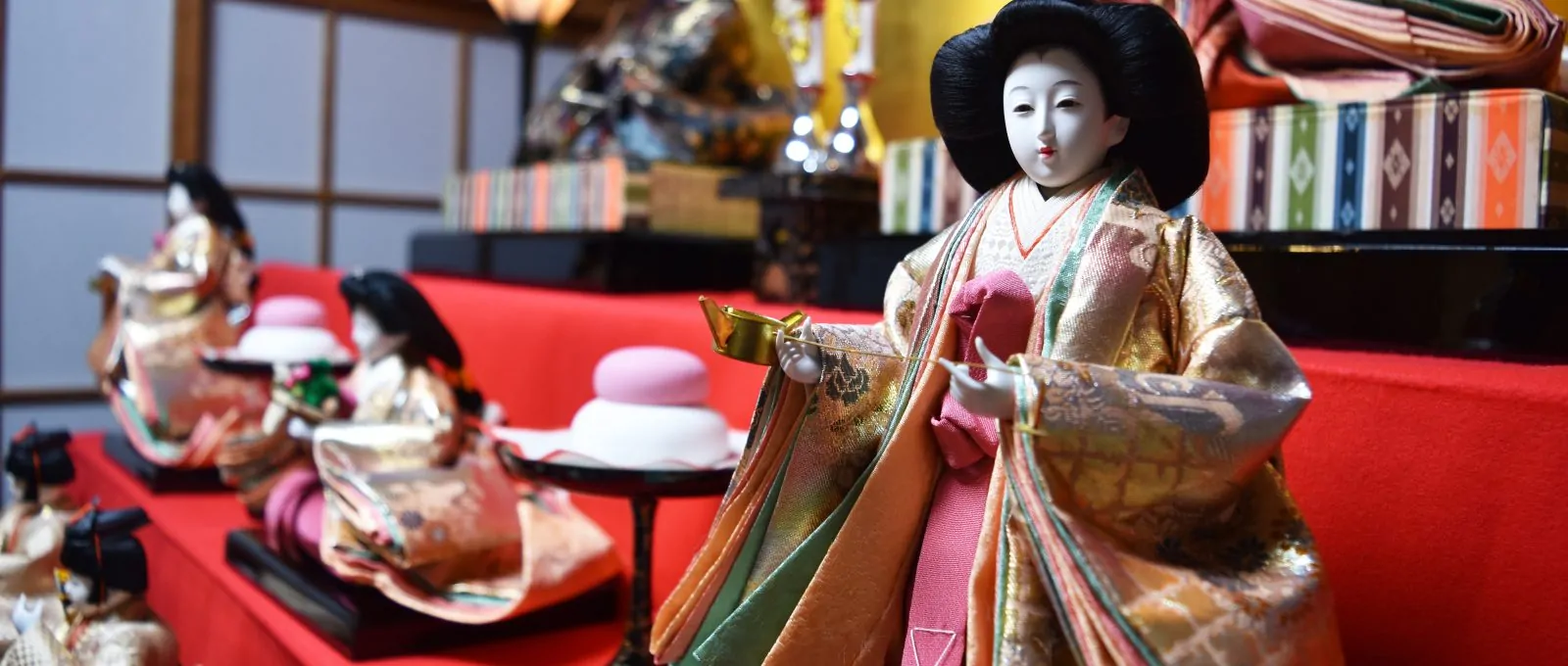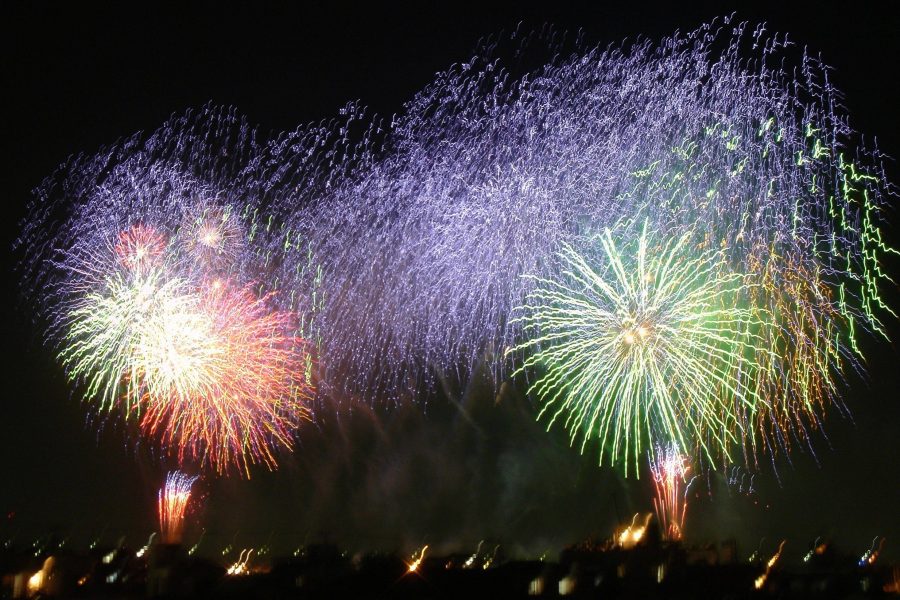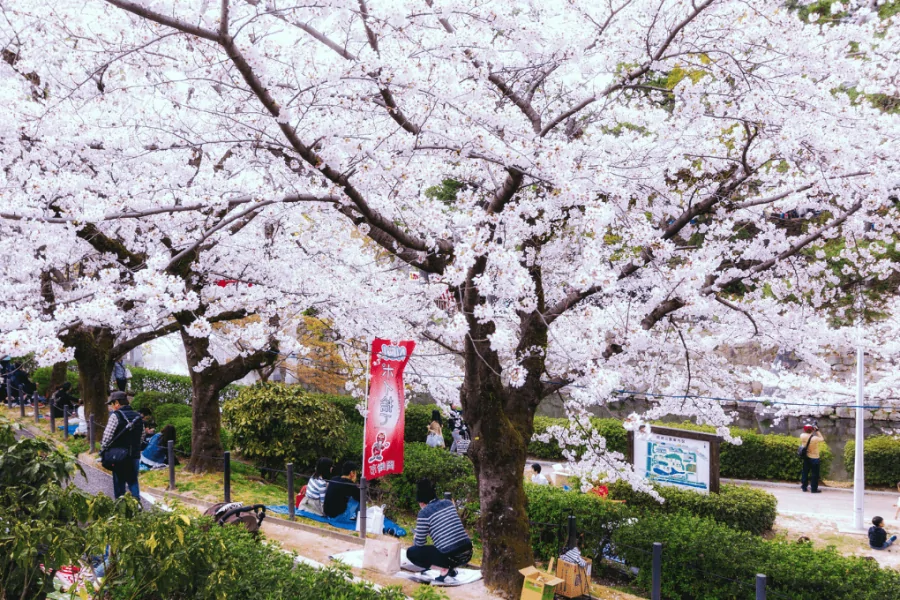A rich hotbed of culture, customs, traditions, and events, Japan has become a bucket list destination for millions of tourists across the globe. From the neon lights of downtown Tokyo to the breathtaking natural landscapes of Hokkaido, the island nation’s attractions are legendary.
Perhaps you’d appreciate the unreal landscape of Mount Fuji on the island of Honshū. Maybe you want to bask in the many sights from Kyoto’s long list of UNESCO World Heritage Sites. Or you may simply enjoy a night stroll admiring the hundreds of brightly-lit skyscrapers and buildings in downtown Tokyo.
And then we have the Hinamatsuri, the stunning Japan doll festival. This unique celebration appeals to visitors worldwide and is one of Japan’s most unique and intriguing events.
Learn all about it with our guide!
About Hinamatsuri
If you’re considering visiting Japan around springtime, the 3rd of March is a date you should mark in your calendar. In Japan, the 3rd of March is not just some ordinary day in the third month of the year – this holiday celebrates the happiness and success of young girls.
Known as Hinamasturi (or Girls’ Day), the prosperity of the future generations of Japanese women is celebrated in various ways across the country. Celebrations usually include the creation of a wide assortment of intricately decorated hina dolls, festive foods such as rice crackers of multiple colors and raw fish accompanied by rice, and elaborate peach flower decorations.
While most countries worldwide dedicate a particular day to celebrating their mothers, fathers, sons, siblings, and partners, the Japanese unite on the 3rd of March to wish their young girls fruitful lives. The celebrations are formal and celebrated both in public and at home – families typically own hina dolls used during the festivities.
So how did it start, and what sets it apart from other festivities?
What is Hinamatsuri For?
Hinamatsuri, also known as “Girl’s Day” or “Doll’s Day” in Japan, is widely believed to derive from China’s Shangsi Festival. It’s suggested that the occasion was introduced to Japan as a traditional festival when the country embraced the Chinese calendar, including its customs. Some other long-established celebrations on the calendar include the Dragon Boat Festival on the fifth day of the fifth month and the Qixi Festival on the seventh day of the seventh month.
As one can tell, these festival dates were traditionally held on odd-numbered months on the same day as the month, with the reasoning being that these dates were thought to be lucky or provide good fortune. Similarly, the Shangsi Festival was originally a way to ward off badness by setting dolls on a river to drift away with the participant’s misfortunes in a tradition called “nagashibina.”
Over time, these dolls became more prominent and were fancied as home decorations rather than being set on rivers, eventually becoming known as hina dolls. These were used as toys among the children of aristocrats in pretend play activities.
The modern Hinamatsuri festival is held on the 3rd of March according to the Western calendar. It has now become a celebration of the growth and happiness of young girls dating back to the Edo Period (1603-1868).
Symbolism Behind Hina Dolls
The first hina dolls (also known as hina-ningyo) were made of straw and paper. This eventually developed into fancy dolls adorned with elegant robes as the festival became more prominent during the Edo Period. Once used as fancy play toys by aristocrats or placed on river surfaces, similarly to China’s Shangshi Festival, hina dolls have now become a staple of Hinamatsuri celebrations.
Also called the Peach Festival or Momo no Sekku, Hinamatsuri originated as a celebration of the Shangsi Festival and included peach blossoms, believed to bring good luck, protect against negative influences, and promote long life. Today, the holiday continues to incorporate peach blossom decorations as a tribute to its origins and to symbolize the start of Spring and the innocence and youth of young girls, both themes of Hinamatsuri.
How are Hina Dolls Decorated & Arranged?
As established, the hina dolls are believed to protect young girls in the family by taking on their problems and illnesses, and many families choose to keep at least one male and female doll in storage. There are two main types of hina dolls:
- Ishо̄gi dolls, which have their costumes put on them like regular clothing
- Kimekomi dolls, which are more complex to decorate.
The process of adorning kimekomi dolls involves creating a body made of paulownia powder and glue, cutting grooves in the body, and gluing on kinran or yūzen fabric, tucking the edges into the grooves. Mostly, hina dolls are displayed on multi-tiered stands, such as:
- The seven-tier dankazari stand
- The shorter two or three-tiered dekazari
- A single-tiered shinnо̄kazari stand that only contains the central pair of imperial dolls.
Display
The hina dolls are typically displayed on a multi-tiered platform, with each level representing a different part of the imperial court. On the top platform, you can expect to see it only containing two dolls, the dairi-bina or imperial dolls – which are always the Emperor and Empress. The second platform holds the san-nin kanjo, three ladies of the Imperial court who serve drinks.
The third platform holds the go-nin bayashi, five male musicians, and the fourth platform displays two ministers, zuijin, also known as the couple’s bodyguards, and tables with gifts for the couple. The fifth platform displays three helpers or protectors of the couple, a mandarin orange tree and a cherry blossom tree. Lastly, the sixth and seventh (bottom) platforms show household items such as furniture, mirrors, sewing kits, and utensils.
Heian Representation of Marriage
All doll platform-based arrangements are known as hinadans, the most iconic and well-known decorations of the Hinamatsuri festivities. The dolls, representing a wedding from the Heian period with the couple surrounded by their court, are traditionally arranged in a specific order that may vary depending on the region and family tradition. Doll sets can be expensive, with two-tier sets costing around $700 and five-tier sets costing over $2,600, so they are often passed down throughout generations of families.
These stands are typically decorated between the first days of Spring to mid-March, with some families setting them up one week before Hinamatsuri at the latest. Decorating well in advance is highly recommended: choosing to set up hinadans a day before a Hinamatsuri festival is known as ichikakazari (overnight decorations). This is seen as a harbinger of ill fortune.
Famous Hinamatsuri Festival Events in Japan
If you want to check out the glorious festivities of Hinamatsuri the next time you happen to be in Japan, there are spectacular local festivities all around the islands. Here’s a list of Hinamatsuri festival events you can choose from and an opportunity to familiarize yourself with each occasion’s proceedings!
1. Machikado Hina Meguri
- Event Dates: February 19 – March 6
- Venue: Shops around the East Exit of Iwatsuki Station, in the Saitama Prefecture
- Price of Admission: Free
Iwatsuki, located in Saitama City, is famously known for being the top doll-producing area in Japan and has earned the nickname “City of Dolls.” Each year, the town hosts the “Touring the Streets of Hina Dolls” event, which includes various activities centered around hina dolls, including sightseeing, crafting, and eating hina doll-themed products.
During the sightseeing portion of the event, participants can attend a stamp rally and take a look at shops that feature dolls that local craftsmen own. It’s an excellent opportunity to support these skilled artists and marvel at the intricate patterns and details in their creations! There are also plenty of opportunities to create miniature hina dolls and try festive traditional food at local eateries.
2. Hina no Tsurushikazari Festival
- Event Dates: the 20th of January – the 30th of March
- Venue: Inatori Cultural Park and Hina no Yakata, Shizuoka Prefecture
- Price of Admission: 500 yen (approximately USD 3.80)
In Shizuoka Prefecture’s Izu Inatori, it is customary to display a pair of hanging decorations on either side of a doll stand during the Hinamatsuri celebration. These decorations often passed down through families, will be on display at four locations around town during the “Hina Hanging Decorations Festival” in 2023.
The main venue for the decorations will be the Hina no Yakata building within the Inatori Cultural Park. While you’re there, you can also browse souvenirs and other items for sale at local shops. The festival will be open until the 30th of March, meaning it’s one of Japan’s longer-lasting Hinatsumari festival events.
3. Katsuura Big Hinamatsuri
- Event Dates: Late February – Early March
- Venue: Various locations in the Chiba Prefecture, Tomisaki Shrine, and Katsuura City
- Price of Admission: Free
One of the most well-known Hinamatsuri celebrations is the Katsuura Big Hina Matsuri, where hina dolls are displayed at Tomisaki Shrine and Kakuoji Temple. Organized by the National Katsuura Network, it has taken place in Katsuura City since 2001, and every day during the event, 1,800 hina dolls are lined up on the Tomisaki Shrine’s stone steps and then carefully put away at nighttime – this is likely the largest amalgamation of dolls you’re going to see in your life!
Additionally, stores in the shopping district are creatively decorated with hina dolls for the festival’s duration. This Hinamatsuri festival is truly a once-in-a-lifetime experience. However, this will likely mean that crowds will be at their biggest in 2023, considering Katsuura celebrations were canceled last year due to COVID concerns.
4. The Edo Nagashibina Festival
- Event Dates: Late February – Early March
- Venue: Sumida Park, Tokyo
- Price of Admission: Free
The Nagashibina Festival, also known as the festival of floating dolls, is a modern version of an ancient Japanese tradition in which small dolls were placed in baskets and sent down rivers and streams as a prayer for the safety and well-being of children. This festival was revived in Tokyo in 1985 and takes place at the end of February or the beginning of March.
During the Edo Nagashibina Festival in Asakusa, approximately 3,000 people of all ages attend and participate by releasing paper dolls into the Sumida River, both as a prayer for children and as a way to encourage them to be gentle and kind as they shape their future. Join in on the fun with your children and give your descendants a chance to pray for future successes as well!
5. Hyakudan Hinamatsuri
- Event Dates: Late January – Mid-March
- Venue: Hotel Gajoen, Tokyo
- Price of Admission: Free
In Tokyo, the Hyakudan Hinamatsuri, or “hundred-steps festival,” takes place at Meguro Gajoen’s famous Hundred-Steps Staircase, a designated cultural property of Tokyo. This event features a display of vintage hina dolls from Kyushu, a region with a rich Hinamatsuri culture.
The dolls on display include those from noble weddings during the Edo period, shin-himes (ancient dolls), and ritual dolls used for mountain deity prayers, among other collections of dolls and decorations.
Suppose you’re looking for a place to stay near this Hinamatsuri festival’s location. In that case, the venue happens to be located at one of Tokyo’s most luxurious hotels, Hotel Gajoen! It’d be a good idea to book your stay as soon as possible since the hotel naturally tends to be near or at max occupation around the festival’s dates.
Closing Thoughts
Hinamatsuri festivals are an important part of Japanese culture and have a long history dating back to ancient times. These festivals serve as a way to pray for the safety and well-being of children and also provide an opportunity for people to come together and celebrate Japan’s traditional culture.
In modern times, Hinamatsuri festivals have been revitalized and continue to be a beloved and integral part of Japanese culture. Through the display of traditional hina dolls and other cultural artifacts, these festivals provide a window into Japan’s rich history and help to preserve and celebrate its cultural heritage.
If you’re considering visiting Japan soon, there’s every reason to seek out and attend a Hinamatsuri festival!





Leave a Comment